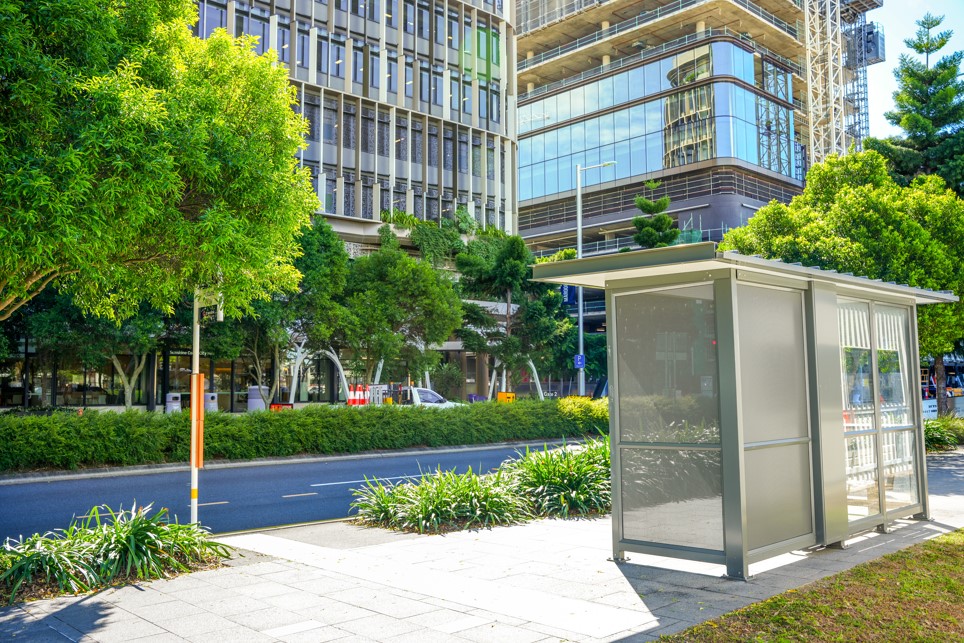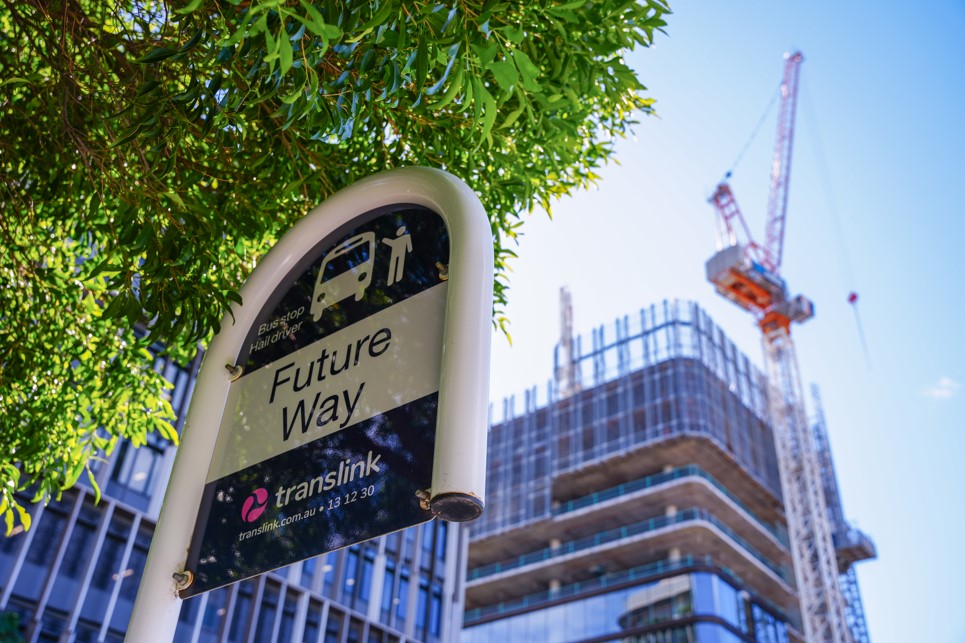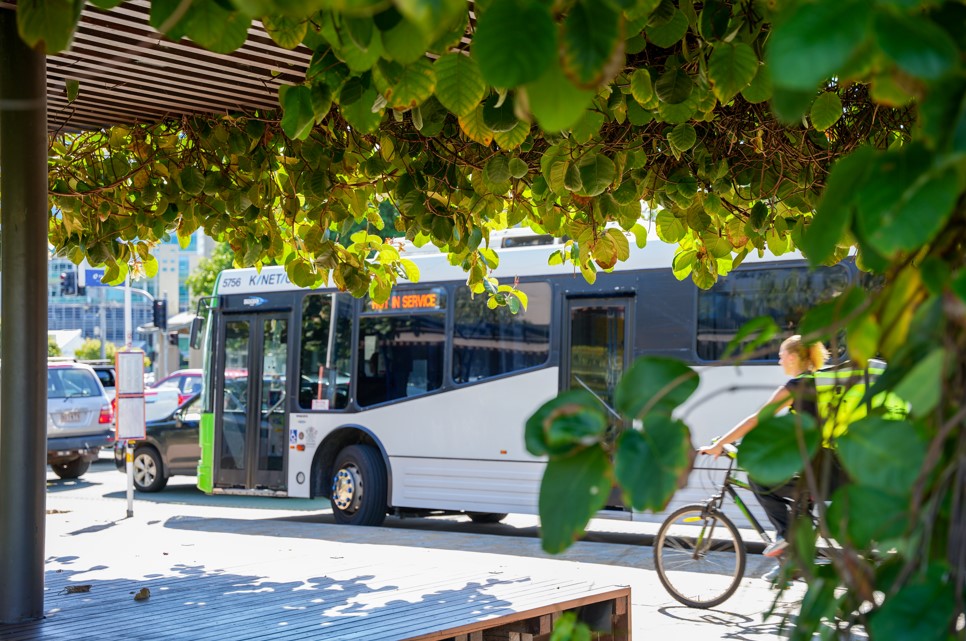The Sunshine Coast is at a crossroads. With one of the fastest growing regions in the country and the second-highest private vehicle ownership rates, the way we move is fast becoming both a major challenge and huge opportunity.
By 2041, another 200,000 people will call this region home. That growth brings enormous economic potential but places pressure on how we connect our communities.
The announcement that Maroochydore City Centre will host an Athlete village, arena, and cultural precinct for the 2032 Olympic and Paralympic Games marks a defining moment for the region. The State Government has also unveiled plans for The Wave, a new direct rail line and high-frequency bus network that will connect Beerwah to Caloundra and through the Sunshine Coast Airport, via Maroochydore City Centre which signals a big step forward in public transport investment and reinforces Maroochydore City Centre as the city heart of a connected, thriving Sunshine Coast.
As we prepare for this next chapter, we must recognise roads alone can’t shoulder the burden of our region’s growth. The solution lies in embracing multimodal transport: a smart mix of public transport, walking, cycling, and urban planning that prioritises people. This approach will unlock long-term value for our economy, environment, and the coastal lifestyle we cherish.

Congestion is already biting
Across key corridors, congestion is growing steadily.
Transport and Main Roads data shows daily traffic volumes on the Nicklin way have jumped by more than 35% over the past decade. For example, south of the Brisbane Rd On-ramp has seen an increase in daily traffic from 52,121 (2013) to 71,071 (2023).
This pattern is being repeated across the region. More than just inconvenience, congestion carries real costs: longer commutes, higher emissions, and lost productivity.
Forecasts indicate that 830,000 extra car trips are anticipated on the Sunshine Coast each day by 2041 – a staggering 70% jump – if the focus remains on vehicular traffic.


Why more roads won’t fix the problem
When it comes to tackling congestion, a recent article in the Australian Financial Review highlights a growing consensus among global planners: building more roads doesn’t solve congestion, it fuels it.
This phenomenon, known as induced demand, reveals that every time we expand road capacity, more people drive, quickly filling up new lanes and putting us right back where we started.
“You cannot build your way out of congestion,” says Professor Mark Stevenson, a leading urban transport and public health expert at the University of Melbourne. “It’s only a matter of time before new infrastructure is overwhelmed.”
New York City’s former Transport Commissioner Janette Sadik-Khan puts it more bluntly: “We know building roads to relieve congestion is like loosening your belt to solve obesity. It just doesn’t work.”
Best practice from established cities like New York and Copenhagen are showing that high-quality public and active transport infrastructure can reverse this cycle by making alternatives to driving the easiest and most attractive option.
Rethinking transport: A more sustainable approach
An August 2023 report by Engineers Australia emphasises the need for change. It warns that Australia’s traditional approach of widening roads to manage growth is unsustainable. Instead, integrated, sustainable transport solutions are delivering stronger economic and environmental returns, particularly in fast growing regions like ours.

The Sunshine Coast Integrated Transport Strategy 2041 sets ambitious targets: reduce car travel from its current rate of 85% to 70%, increase active transport from 12% to 20% and boost public transport usage from 3% to 10%.
Achieving these goals means embracing a bold shift, investing in public and active transport, and embracing transport-oriented development (TOD) that connects people to where they live, work, and play.
Across the country, thought leaders are calling for a smarter, more sustainable way forward.
The Australia Institute, a national policy think tank, has suggested taking inspiration from successful global models by increasing investment in active transport and offering incentives like tax rebates or cash allowances for people who cycle to work.
A 2024 survey by the Institute found:
- Two-thirds of Australians (62%) support a cycling mileage allowance
- Two-thirds of Australians (63%) support trading in internal combustion vehicles for EVs, e-bikes and public transport credits.
On the Sunshine Coast, we see what can be possible when it comes to encouraging a mode shift.
Maroochydore City Centre, designed as a transport-oriented development (TOD), provides a blueprint for reducing car dependency. By prioritising accessible, multi-modal transportation systems—public transport, active transport, and walking—we are creating an environment where driving isn’t the default.


Meeting the challenge
As the Sunshine Coast continues to grow, rethinking how we move around the region is essential.
We need a sustainable, integrated transport network that supports a region where people can live, work, connect, and explore with ease.
By shifting our focus beyond road expansion to smarter, connected and accessible public and active transport solutions, we can future-proof how our region moves.
Achieving the 2041 mode shift targets will take collective effort, clear vision, and smart infrastructure. But with the right moves now, the benefits will last for generations.
